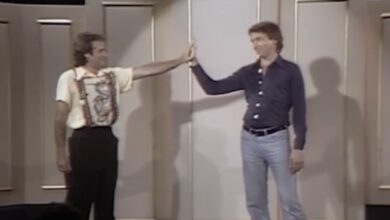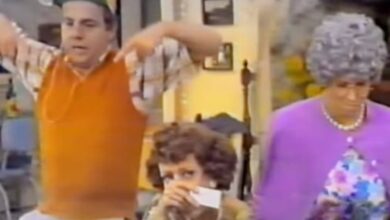Chris Stapleton Breathes New Soul into Vince Gill’s Beloved Ballad
Chris Stapleton has a way of commanding a room before he even sings a note, yet his turn at CMT Giants: Vince Gill reached beyond his usual magnetism. Interpreting one of country’s most tender ballads, he honored Vince Gill while channeling that gravelly, gospel-tinged power that defines his artistry. The result didn’t merely salute the original; it reframed it—spotlighting the quiet ache, the breath between phrases, and the lived-in emotion that reminds audiences why Stapleton stands among the most compelling voices of his era.
A Ballad That Shaped Its Era
Released in 1994 on the album When Love Finds You, Vince Gill’s “Whenever You Come Around” emerged as a defining moment in contemporary country. Co-written with Pete Wasner, the song’s unadorned language and open-hearted perspective transformed it into a signature Gill anthem. Its chart success—rising to No. 2 on the Billboard Hot Country Songs survey—was only part of the story. What really resonated was how listeners recognized themselves in its trembling honesty, as if Gill had bottled the fragile surge of love at first sight.
The Spark That Started It All
The origin tale gives the ballad an almost cinematic glow. Gill has shared that the song was born from a chance connection with Amy Grant, whose warmth and presence lingered in his mind. That spark became a melody and then a confession—feelings that would later echo through their real lives when they married in 2000. Knowing the backstory doesn’t just add trivia; it enriches the listening experience, turning each verse into a snapshot of awe, longing, and the courage to admit both.
Why the Words Hit So Hard
Part of the song’s endurance is its restraint. Instead of dramatic declarations, it leans on small, vulnerable details—how the right smile or a familiar voice can tilt your entire world. The arrangement gives those feelings room to breathe: gentle lines, thoughtful pacing, and a vocal that never rushes the heart. You don’t need ornate poetry when the truth is this unguarded; the lyrics simply trace the nervous wonder of being changed by someone’s presence and not quite knowing what to do with that revelation.
Stapleton Finds the Soul Inside the Silence
When Stapleton stepped into the song at CMT Giants, the room seemed to steady itself. His voice—weathered, smoky, and impossibly controlled—carried the melody like a confession whispered across a quiet table. He respected Gill’s blueprint but colored the space between phrases with his own timbre and timing, the way a great actor inhabits a role rather than merely recites lines. It wasn’t imitation; it was illumination, a performance that deepened the hues of a familiar, beloved canvas.
The Crowd and the Digital Echo
Audience reactions rippled quickly—first a hush, then a swell of recognition as his interpretation found its footing. Online, fans amplified that moment, marveling at how he could take a song already heavy with emotion and somehow intensify it without overpowering its tenderness. Comments poured in about the warmth of his tone, the patience in his phrasing, and the way he seemed to live inside every syllable. It wasn’t just well-sung; it felt profoundly understood, and that difference mattered.
A Classic, Reintroduced
Performances like this don’t simply remind people of a great song; they hand it to new listeners who may have missed it the first time. In an era when production often takes center stage, Stapleton’s reading returned the spotlight to storytelling and voice. For younger audiences, it served as a bridge back to Gill’s catalog. For longtime fans, it refreshed the emotional colors, reinforcing the idea that a masterfully written ballad ages not by fading, but by revealing new shades with each generation.
Threads Through Pop Culture
The song’s cultural footprint stretches well beyond radio spins or chart lines. It has found a second life in film and television, where supervisors reach for it when a scene needs unforced sincerity—moments steeped in reflection, reunion, or bittersweet longing. There is a universality to the mood it creates, a shared heartbeat that helps a story breathe. That’s why it keeps appearing: it’s a musical shorthand for vulnerability that never feels manipulative or overplayed.
Outside screens, the ballad often surfaces at gatherings that mark the passage of time—weddings, farewells, memorial services, and milestone celebrations. Its gentleness doesn’t dull its power; it sharpens it, helping people articulate feelings that aren’t easily spoken. The melody becomes a companion in rooms where emotions run close to the surface. Stapleton’s revival doesn’t change that role—it clarifies it, proving that a careful, compassionate delivery can make an already meaningful song feel newly essential.
Why This Reading Matters
Great tributes are about more than reverence; they’re about insight. Stapleton’s version worked because he treated the lyric like lived experience, not museum glass. He preserved the core tenderness while shining a light on fresh corners—the pauses, the breath, the subtle crescendos that make the heart lean in. In doing so, he honored Gill’s craftsmanship and reminded everyone listening that country music’s deepest magic lies in telling the truth softly and letting that truth echo.
Share What You Heard
“Whenever You Come Around” endures because it refuses to shout what it can say with a tremor and a glance. Vince Gill captured that delicate vulnerability; Chris Stapleton layered it with a raw, soulful gravity that made the song feel immediate again. Did his version shift how you hear the lyric? Did it surface a memory you’d forgotten? Add your thoughts below—moments like these live longer when we carry them together and pass them on to someone who needs them.





